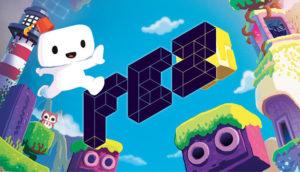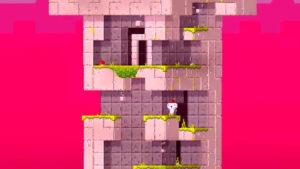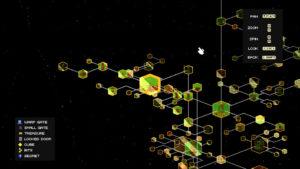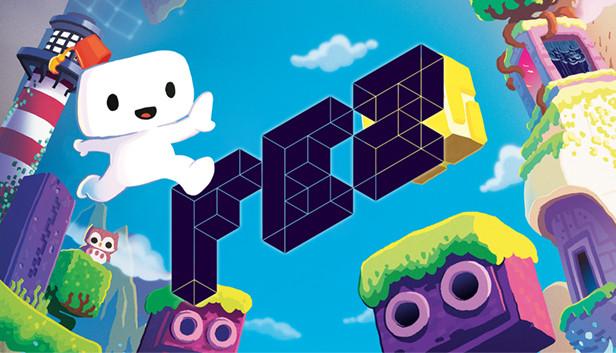
Fez is a playground. It succeeds in sparking childlike wonder, and it’s made me appreciate exploration and discovery as types of fun, and when to let challenge and narrative can take a backseat.
For my critical play this week, I played Fez, a 2D/3D puzzle platformer made by the indie game company Polytron Corporation. Polytron Corporation was founded by Phil Fish, Fez’s lead designer. I played it on my PC, but it’s also available on Mac, iOS, and an impressive range of consoles. It’s likely to be enjoyed by all ages, but it does require some mechanical/spatial skill so its target audience is approximately ages 8+.
Fez is a puzzle platformer. The game takes place in 3D, but the player is only shown one face of the world at a time in 2D, so the game’s puzzle mechanics center on perspective-shifting between different 2D views of the 3D world. What appears to be flat ledges might actually jut out a few feet once you rotate the world, unlocking different exploration possibilities with each rotation of the world.

2D meets 3D platforming in Fez.
An Emphasis on Exploration
Though it’s ostensibly a platformer, Fez feels less like Super Mario Bros and more like Monument Valley.
The perspective-shifting mechanic supports exploration well since naturally 75% of the level is hidden to the player at any given time. It makes sense, then, that the core objective of the game—collecting yellow blocks that are scattered throughout the levels—rewards the player for exploring. In fact, that’s most of what Fez boils down to: exploration; just meandering around a level and marveling at the unique and perplexing ways that the perspective shifts how your player moves around the space. In fact, Fez is so committed to this exploration that it has no enemies, bosses, or even lose conditions (even falling off the world just respawns you where you last were). This lets the player really relish in exploring and stopping to appreciate the world. Though it’s ostensibly a platformer, Fez feels less like Super Mario Bros and more like Monument Valley.

Even Fez’s map invites exploration, in all its rotatable, manipulable glory.
Fez as a Genre Case Study
I’m reminded of the MDA video by Extra Credits on rethinking game genres that suggests that game genres are better defined by the types of fun they create than their actual mechanics. That rings true for Fez: it ostensibly has the mechanics of a platformer but its removal of enemies and introduction of perspective puzzles reigns in the typical platformer chaos and makes it feel more like a meditative puzzle game. As a designer, I find it refreshing that an age-old formula like the platformer can be made to fit into an entirely new class by swapping out one or two mechanics. It’s a framework I’ll be keeping in mind as I move forward in my game design career.
Areas for Improvement
The story of Fez did lack for me at times. The narrative felt like wrapping that was tacked onto a game that the developers wanted to make regardless of the story. It’s not quite ludo-narrative dissonance so much as it is lack of substantial story, to begin with. If there’s one thing I’d fix about Fez, it’d be taking the opportunity to tell a more compelling story that leaves players with something to think about (take notes from Celeste here, perhaps).



